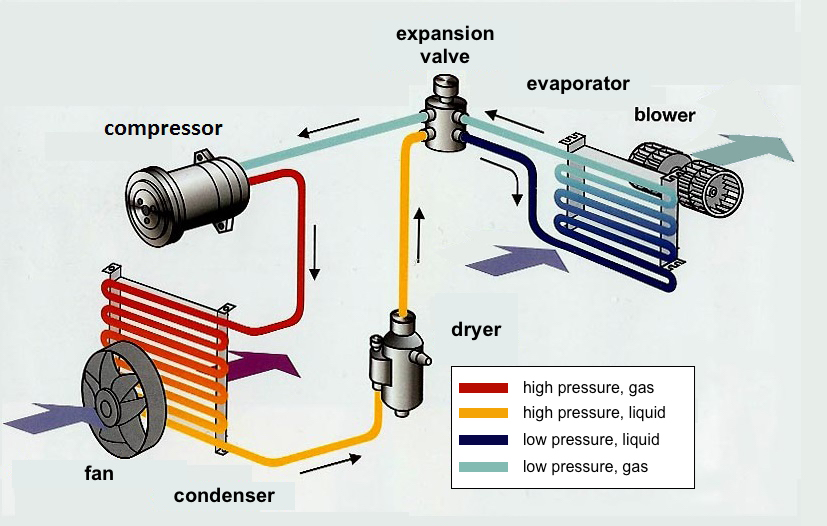Air conditioning is an important component in modern vehicles that ensures passengers’ comfort by regulating the interior temperature. In this blog post, we will delve into how an air conditioning system works in most passenger vehicles, the process of refrigerant phase change, temperature drop mechanisms, and common issues to watch out for.
How Does the Air Conditioning System work in a passenger vehicle?
- Compressor: The compressor plays a vital role in the air conditioning system by compressing the refrigerant gas, increasing its pressure and temperature.
- Condenser: The hot, high-pressure refrigerant gas flows into the condenser, where it releases heat to the surrounding air, causing it to condense into a high-pressure liquid.
- Expansion Valve: The high-pressure liquid refrigerant then passes through the expansion valve, where its pressure drops suddenly. This results in the refrigerant evaporating rapidly, changing into a low-pressure, cool gas.
- Evaporator: The cool gas is circulated through the evaporator, located inside the vehicle’s cabin. As the warm air from the cabin passes over the evaporator coils, heat is absorbed, and the air is cooled before being circulated back into the cabin.

How Does the Refrigerant Phase Change Create a Temperature Drop?
The process of changing the refrigerant from a gas to a liquid and back to a gas allows for the absorption and release of heat. When the refrigerant evaporates in the evaporator, it absorbs heat from the cabin air, cooling it. Conversely, when the refrigerant condenses in the condenser, it releases heat, which is dissipated into the external environment.
Potential Problems and Symptoms:
- Low Refrigerant Levels: This can lead to insufficient cooling. Symptoms include warm air blowing from the vents or reduced cooling effectiveness.
- Compressor Issues: Malfunctions in the compressor can result in poor cooling performance or unusual noises when the system is running.
- Leaks: Refrigerant leaks can impact the system’s efficiency and cooling capacity. This is the most common issue we find with our customer’s AC systems.
- Electrical Problems: Issues with the electrical components, such as the blower motor or control switches, can cause the system to malfunction or not work at all.
Understanding how the air conditioning system works in passenger vehicles can empower customers to make informed decisions about maintenance and repairs. Regular servicing and prompt identification of potential issues can ensure that your AC system functions optimally and keeps you comfortable on the road. Don’t hesitate to reach out to us at Ottawa Easy Wheels Inc. for expert advice and services to keep your vehicle’s air conditioning in top condition.
